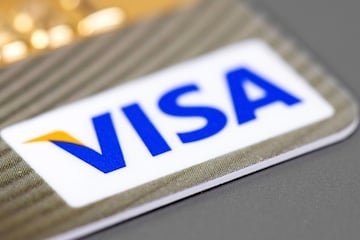Visa’s new fraud monitoring framework begins on October 1, 2025, when acquiring merchant banks are subject to a new chargeback and fraud standard and a new fee structure.
The Visa Holder Monitoring Program replaced two visa fraud and chargeback programs in April 2025 and introduced a combined measure called the VAMP ratio.
Visa has given acquiring banks and indirect merchants six months to prepare for enforcement of the VAMP ratio and its potential fees. The “watch” period ends on September 30, 2025, and some acquirers may be charged a chargeback fee of $10 (or more). However, VAMP enforcement is being phased in until 2026.
Visa estimates that the new VAMP framework could help acquirers detect four times more fraud than the old system, potentially saving more than $2.5 billion in annual losses.
The goal of the Visa Holder Tracking Program is to reduce credit card fraud.
Indirect impact
VAMP targets acquirers – the banks, processors and payment intermediaries that provide merchants with access to the Visa network. Visa imposes penalties on these acquirers because it contracts with these companies, not directly with merchants.
For enterprise-level e-commerce businesses or multi-channel retail businesses, this acquirer distinction may matter less than it might seem.
Acquirers are responsible for their business portfolios and are likely to adhere to VAMP standards. So if the merchant’s dispute or fraud rate increases, the acquirer may respond with higher fees, stricter rules, or even account termination as a last resort. (Additionally, Shopify Payments is an acquirer and therefore subject to VAMP.)
VAMP ratio
The VAMP ratio is a key metric of the program. Visa calculates the ratio by adding the reported fraud cases (known as TC40) and chargeback cases (TC15) and then dividing by the number of processed Visa transactions.
Visa issues a TC40 when a shopper reports an unauthorized charge, regardless of whether the claim develops into a full dispute.
Conversely, a TC15 or chargeback is a transactional dispute that may or may not be related to a fraud claim.
One wrinkle is that VAMP counts fraud-related chargebacks twice – once as fraud (TC40) and once as a dispute (TC15).
This double counting makes the VAMP ratios relatively stricter than the old system. The reason given by Visa is that fraud that escalates into a chargeback is doubly harmful and should carry more weight.
So-called friendly fraud, where the customer lies about not receiving the goods, would also unfortunately be counted twice.
Threshold values
VAMP has three primary thresholds at the time of writing.
- Get above standard includes processors with a portfolio-wide VAMP ratio of 0.50% or higher. Acquiring banks in this category will be subject to a US$5 visa penalty per fraudulent or questionable transaction from 1 January 2026.
- Get excessive describes processors with a portfolio VAMP ratio of 0.70% or higher. These transferees will pay $10 per dispute effective October 1, 2025.
- An exaggerated businessman is the VAMP threshold for individual merchants within the acquirer’s portfolio who have a ratio of 2.20% or higher with at least 1,500 fraudulent and questionable transactions per month. Buyers must pay an additional $10 per disputed transaction for these sellers.
In short, Visa wants acquirers to take chargebacks and card fraud much more seriously.
Enumeration attacks
VAMP also monitors and penalizes acquiring merchants who fail to prevent large-scale “enumeration” or card number testing attacks, where fraudsters make thousands of authorization attempts to guess card details.
Acquirers are subject to fines or other measures if a merchant’s enumeration attempts exceed 300,000 per month or when 20% of total authorization requests come from fraudsters.
Most attacks should be thwarted by relatively simple steps such as CAPTCHA tests or authorization attempt limits.
Impact
VAMP only applies to sellers with 1,500 or more disputed charges (40 TC plus 15 TC) per month. So most e-commerce SMEs will continue to pay $15 to $30 for chargebacks, but won’t need to track Visa any further.
However, large retailers may want to monitor their VAMP ratios to avoid warnings, reserve requirements or even offboarding from their acquirer.
In general, merchants who do not have significant issues under Visa’s fraud and chargeback programs are likely to experience minimal impact from VAMP.

